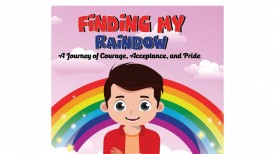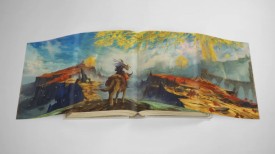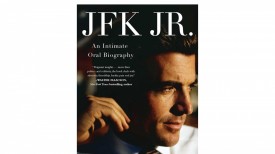Renowned ‘Babar the Elephant’ Creator Laurent de Brunhoff Dies at 98
Laurent de Brunhoff, who made Babar the elephant, died at 98. His wife, Phyllis Rose, confirmed the death due to a stroke. A beloved children's book classic, the book was initially created by Laurent's father, Jean de Brunhoff.
The Origin of Babar
Laurent was the oldest of Jean and Cecile de Brunhoff's three sons. Babar's tale was created by Cecile, who not only inspired the character but also gave her name to the elephant's kingdom and acted as Babar's partner. To help them sleep, Cecile would start telling a story about a baby elephant who leaves the jungle and heads to Paris.
The boys loved the story and hurried to tell their dad in the morning. He welcomed the concept and started drawing the young elephant, whom he called Babar. Together, they developed the narrative that eventually became the inaugural Babar picture book, "Histoire de Babar," published in 1931.
Jean continued to write six additional books before his passing in 1937. Laurent, only 12 years old when his father died, was already interested in painting and art. At 21, he turned his attention to Babar. His first Babar book, "Babar's Cousin: That Rascal Arthur," came out in 1946. Before his passing, he authored over 40 more Babar books, making Babar a cherished character in children's books.
Controversy and Reflections
The Babar series was not immune to controversy. Critics argued that de Brunhoff's books glorified French colonialism and depicted caricatures of African people. In the 1980s, Chilean author Ariel Dorfman expressed that the series conveyed an underlying narrative that legitimizes and explains the reasons for an international state where certain nations possess abundance while others face scarcity.
Adam Gopnik, who reports for The New Yorker, supported "Babar" in 2008, stating that it is not a portrayal of French colonialism but rather a humorous commentary on it and its connection to French culture at home.
Looking back at his earlier creations, de Brunhoff agreed with Dorfman's view and regretted certain aspects. He acknowledged feeling uneasy about depicting Babar in conflicts with Black individuals in Africa. He also mentioned that his second book, "Babar's Picnic," was influenced by his father's drawings. However, as time passed, he felt ashamed of this book and asked the publisher to remove it from circulation.
Personal and Artistic Journey
de Brunhoff was married twice. He had a son, Antoine de Brunhoff, with his first wife, Marie-Claude Bloch. He shared a daughter, Anne de Brunhoff, with his second wife, Rose. In the latter part of his career, he collaborated on the Babar books with Rose, an author and former English professor. She described their creative process in a 2014 interview, noting that they often bounce ideas off each other to breathe life into later Babar tales.
The author frequently remarked, 'Babar, c'est moi' (or 'Babar, that's me'). He explained to the magazine that he and the elephant were intertwined because they had spent their lives together.
In 1987, de Brunhoff wrote in a catalog for his art exhibition at the Mary Ryan Gallery in Manhattan that his intention was not specifically to create children's books. Rather, he aimed to keep Babar's legacy alive, which also meant preserving his father's memory. He desired to remain in the world of elephants, which he described as a utopia and a gentle satire of human society.
RELATED ARTICLE: Zachary Levi Brings Drawings to Life in Film Adaptation of Children's Book 'Harold and the Purple Crayon'
© 2023 Books & Review All rights reserved.
Popular Now
1
Books to Read After 'Fourth Wing': Top Picks for Fantasy and Romantasy Fans

2
‘The Secret Public’ by Jon Savage Book Review: An Insightful Look Into the LGBTQ Influence

3
Stephanie Regalado's 'If They Only Knew' Column Is Now A Book, Unleashing 60 Anonymous True Stories to Empower Women

4
'No Wire Hangers' Scene That Almost Did Not Happen: New Book Reveals Faye Dunaway's Struggles

5
Rare First Edition of Aphra Behn's Novel 'Oroonoko' Discovered in Kent: A Historic Literary Find

Latest Stories
Book Reviews
‘The Secret Public’ by Jon Savage Book Review: An Insightful Look Into the LGBTQ Influence

Book News
Stephanie Regalado's 'If They Only Knew' Column Is Now A Book, Unleashing 60 Anonymous True Stories to Empower Women

Book News
'No Wire Hangers' Scene That Almost Did Not Happen: New Book Reveals Faye Dunaway's Struggles

Book Reviews
‘The Perfect Couple’ by Elin Hilderbrand Book Review: A Captivating Summer Mystery

Book News
New Book ‘The Franchise’ Reveals Penguins President Kyle Dubas’ ‘Biggest Mistake’ as Maple Leafs GM











